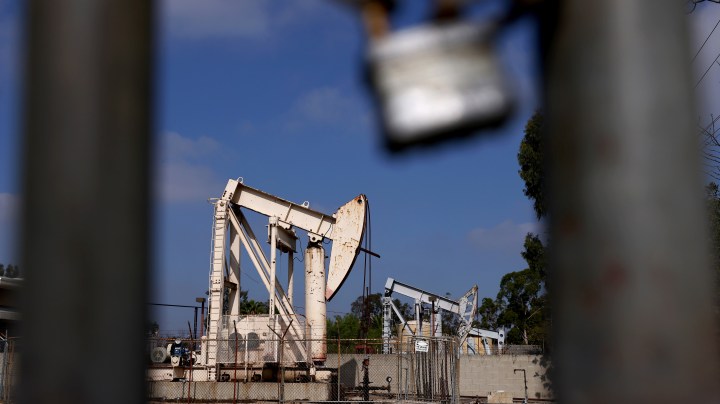
Stepping up the technology to find methane leaks

The Environmental Protection Agency proposed new regulations Tuesday on methane emissions from existing oil and natural gas facilities. The agency is calling for companies to monitor their infrastructure and find and fix leaks of the potent greenhouse gas.
But how exactly will they do that?
It’s not easy to find leaking methane, according to University of Colorado professor Greg Rieker; after all, it’s colorless and odorless. “It’s not like when it’s in your house, they’ve added an odor so that you can smell it if it’s leaking,” Rieker said.
For the last 10 years, people have used an infrared camera to find leaks, Rieker said. On the black-and-white monitor, the gas shows up as a ghostly plume.
“So it almost looks like shimmering on the camera,” he said. “But what’s important is the camera itself is, you know, about $100,000. And then you need a person that’s trained to interpret the images.”
These days there’s new methane-tracking technology. Rieker himself has started a company that uses a laser beamed from a tower to comb the air at oil and gas facilities for methane.
“It automatically just moves from facility to facility and checks over and over and over again all day and all night,” he said.
The EPA encourages oil and gas companies to use this kind of new tech, said professor Arvind Ravikumar with the University of Texas at Austin.
“From drones to airplanes to satellites that detect methane emissions and that provide various advantages,” Ravikumar said.
The lasers, for example, would work well surveying flat land, Ravikumar said, whereas drones might be better at navigating forests.
“The new EPA rule gives operators the flexibility [to] choose the most cost-effective option for their specific operation,” he said.
Plus, Ravikumar said the EPA can use the same technology for enforcement.
There’s a lot happening in the world. Through it all, Marketplace is here for you.
You rely on Marketplace to break down the world’s events and tell you how it affects you in a fact-based, approachable way. We rely on your financial support to keep making that possible.
Your donation today powers the independent journalism that you rely on. For just $5/month, you can help sustain Marketplace so we can keep reporting on the things that matter to you.

















